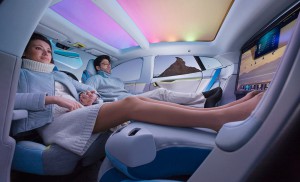 Despite the recent pair of fatal crashes involving self-driving cars, there’s wide agreement that autonomous vehicles will sharply reduce the number of people who die in motor vehicle accidents. In the U.S. alone, traffic accidents claim more than 30,000 lives a year; experts say that by the middle of this century, that toll could fall by up to 90 percent.
Despite the recent pair of fatal crashes involving self-driving cars, there’s wide agreement that autonomous vehicles will sharply reduce the number of people who die in motor vehicle accidents. In the U.S. alone, traffic accidents claim more than 30,000 lives a year; experts say that by the middle of this century, that toll could fall by up to 90 percent.
“I think we’re going to be really surprised by how many things change,” says Dr. Chris Gerdes, director of the Center for Automotive Research at Stanford University.
Driverless cars may not end America’s long-running love affair with the automobile. But with fleets of autonomous vehicles offering low-cost, convenient transportation that can be summoned in minutes, fewer people may want to shell out tens of thousands of dollars to own and maintain their own vehicle.
“We’re moving to a future where people don’t own cars,” says Dr. Daniel Sperling, director of the Institute of Transportation Studies at the University of California, Davis.
Driverless cars will bring big changes to city infrastructure. “We’ve made the world rather unfriendly for people who are walking and biking; cars have essentially won,” Gerdes says. But driverless cars could put the focus back on pedestrians, he says.
Driverless cars will also make for safer intersections, and perhaps even do away with traffic lights, which, of course, came about before cars themselves knew how to avoid collisions.
And with more cars spending more of their time on the road rather than parked, there will be less need for parking lots and parking garages.
It’s no secret that commuting to work by car is stressful, especially over long distances or in heavy traffic. But once commuters are no longer required to drive and are able instead to read, sleep, or simply relax on their way to and from work, even long commutes may seem acceptable, researchers from the MIT Center for Real Estate predicted in a 2017 report on trends in real estate in the U.S.
And so some workers may choose to live farther away from their places of work — decamping to distant suburbs or even to rural areas.
But given that urban centers will become more livable, the report states that other workers will choose to skip suburbia and instead move into city centers — where they could walk or bike to work.
Source: https://www.nbcnews.com
Image: 2014 Rinspeed XchangE Concept Gallery
You can read the original article by Kate Baggaley here.
